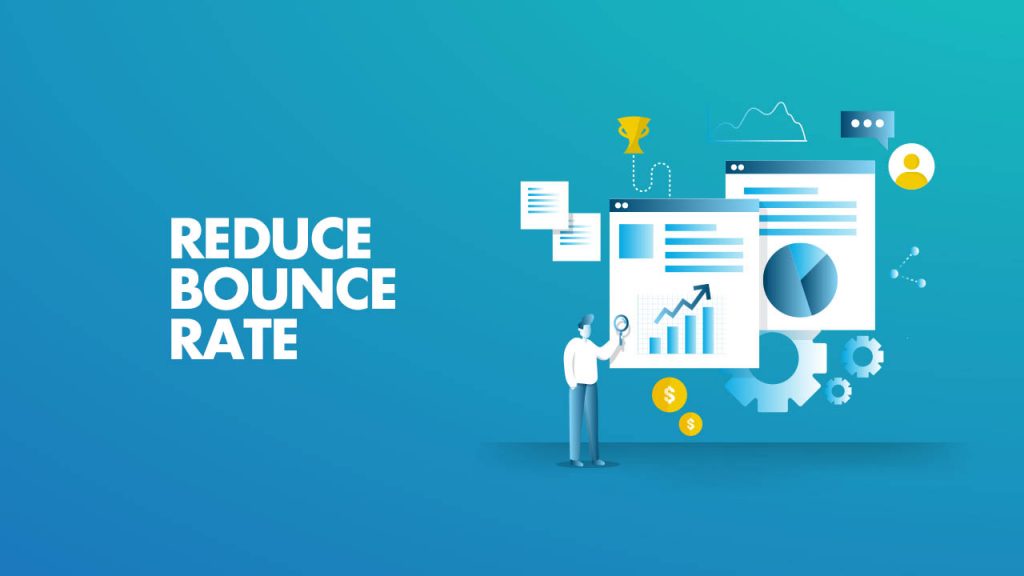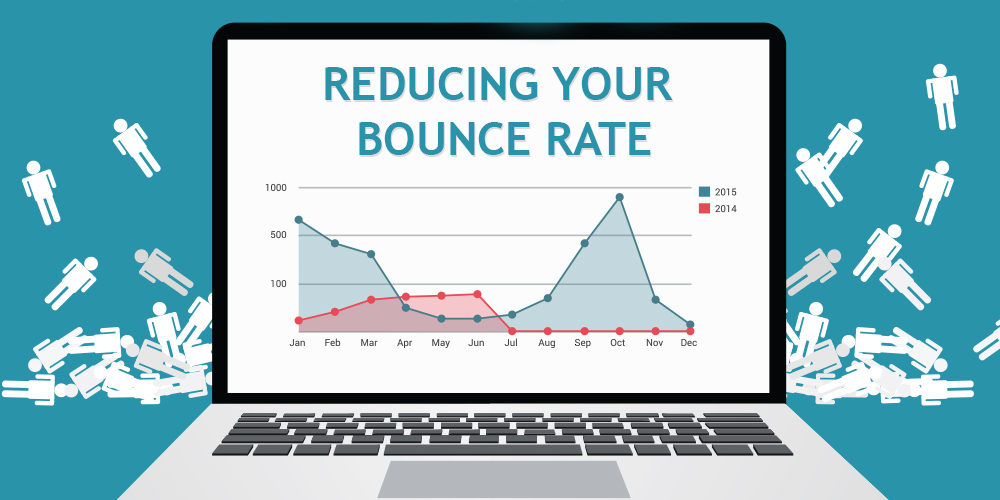What is the bounce rate and why you need to reduce it
The bounce rate of your website is a metric that displays the percentage rates of users who reach on one of your web pages and then renounce without visiting any other pages – also known as single-page visitors. In this article, we’ll look at how to reduce the bounce rate from websites
Many people believe that bounce rate is an important search engine ranking criteria that informs Google a lot about the quality of your WordPress site. Maintain a low bounce rate, and Google will look favorably upon you in at least one regard. If your bounce rate remains high, you may find yourself ranking lower in search engines (SERPs). Having a high bounce rate also suggests you’re dealing with more issues than just rankings.
What is the Bounce Rate
It’s crucial to understand how bounce rate is determined before diving into techniques to lower it. A bounce is recorded in Google Analytics when a session is triggered on your site, such as when a user visits a single page and then quits without triggering more requests in that session, according to Google. The bounce rate is the count of single-page sessions divided by the total count of sessions. This translates to a percentage of your site’s sessions that only visited one page.
Why Reduce the Bounce Rate
Engagement is far more crucial than raw numbers when it comes to digital marketing. It makes no distinction if you get a million visitors per day if none of them convert. Because optimization is crucial, the bounce rate is vital. The digital leaders aren’t commonly those with the most money to invest, but rather those who can modify as much as potential in relation to their budget.

You keep them when you can make that perfect first impression. These users feel compelled to investigate your website, content, and brand. Each new page they view brings them closer to completing a conversion. You also have more time to familiarize yourself with them. Visitors who spend more time on your site are more likely to return. They make it a custom, which results in increased sales, brand exposure, and loyalty.
Latest tips to reduce the bounce rate in your website
With all of these considerations, we can confidently state that reducing the bounce rate is good in every case and should be implemented as soon as possible.
1. Try to understand why visitors are leaving so early
People come into your store, look around, and then leave. What is your initial inquiry? You should be wondering what frightened them away. Was it the arrangement of the store? Was there a disconnect between their expectancy and what they discovered on the inside? Were the offers withdrawn? Perhaps the folks you’re attracting aren’t the right fit for your brand?
Each answer you uncover will provide you with a better understanding of what you need to do to reduce the bounce rate. This is why it’s critical to understand your buyer persona and base your approach on it.
2.Make sure your website is responsive
With the advancement of technology, the number of screen sizes, input methods, and device capabilities that can access your website is growing. When a visitor visits your site but finds it difficult to navigate or visualize any of the information, they will most likely bounce. A responsive site is built to adapt to any of those variations, ensuring that you don’t lose views due to a minor issue.
3. Include a clear call-to-action
If you want to reduce the bounce rate, avoid doing anything that would confuse your visitors. This includes making your call-to-action too complicated (CTA). For example, numerous CTAs on your landing pages should be avoided at all costs. Decide on a single, obvious, and honest action you want visitors to take.
You should also think about where you want your CTA to go. The vast majority of your visitors will decide whether or not they like your site within seconds of arriving, which means they will only look at the top portion of the page. Consider placing your CTA here so that users are aware of your page’s goal right away.

4. Check the readability of your text
It doesn’t matter how perfectly your material answers visitors’ questions if it’s difficult to read and understand. They’ll go elsewhere to find what they’re looking for, and your bounce rate will grow high. Use larger fonts to make your material easier to read on smaller mobile displays, and break up your written content into snackable portions to make it easy to skim. Headings, bullet lists, and even creative features like photos, graphs, and charts can be used to do this.
5. Monitor, test, and optimize
Your bounce rate might be affected by any changes you make to your website. From the placement of an advertisement to the page’s content. With this in mind, you must closely monitor your website for fluctuations in traffic. If you notice a decline in visits and a rise in bounce rate, do A/B tests to see what page elements are hurting your traffic.
Optimize your page once you’ve identified the problem. There’s always space for improvement when it comes to bounce rate. To uncover chances to reduce the bounce rate, use optimization tools.
Conclusion
The effort to reduce the bounce rate is modest with such suggestions for retaining traffic while increasing engagement, and the benefits are beneficial for your brand. So begin analyzing issues and opportunities, as well as developing a positive relationship with your buyer persona. If you are looking for SEO service you just need to call us or contact us on via our social media.

